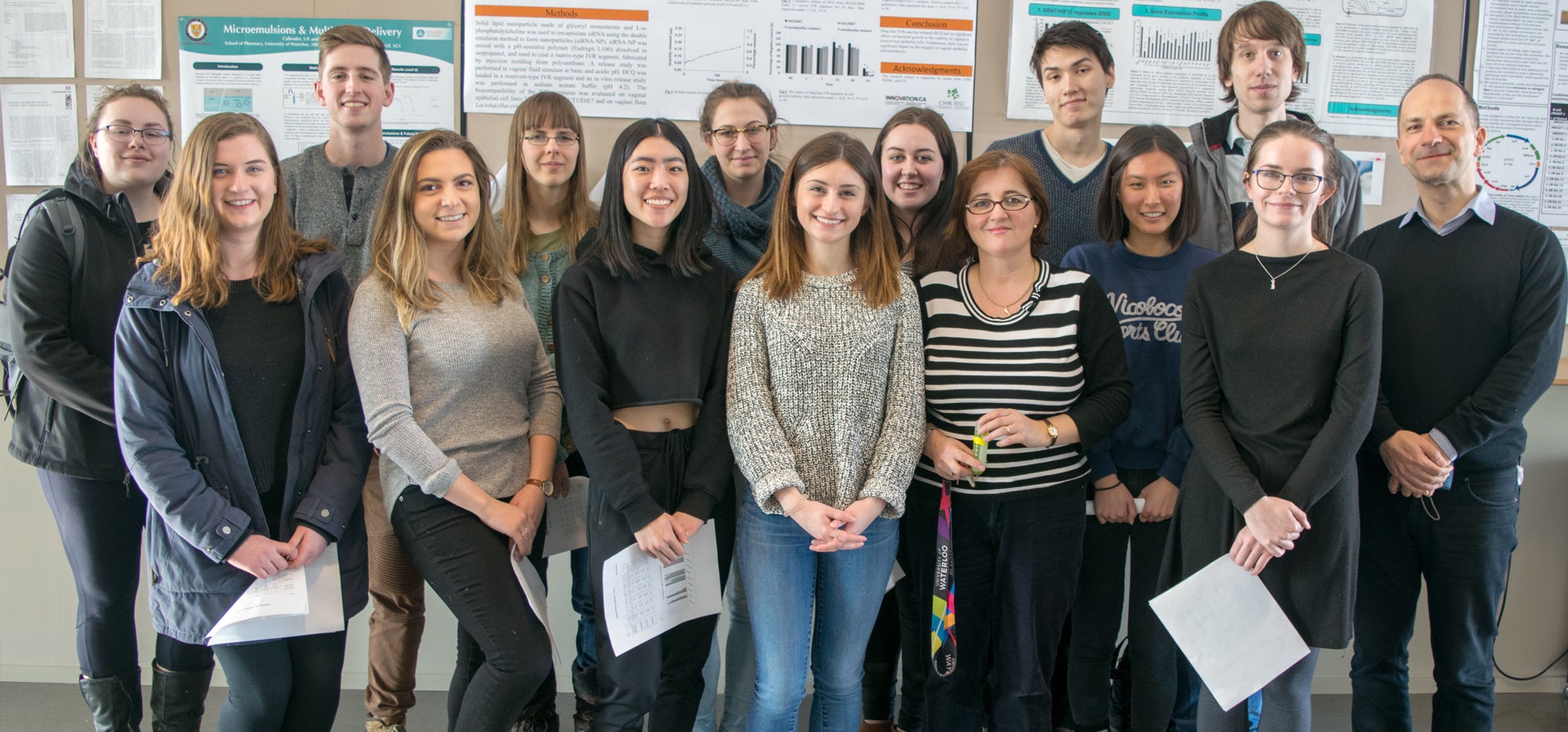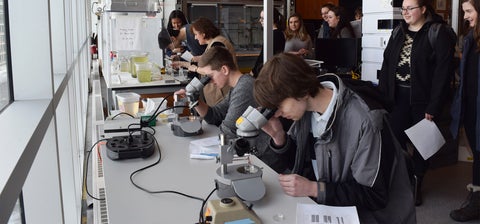
Anthropology class visits Waterloo Pharmacy to see science in action
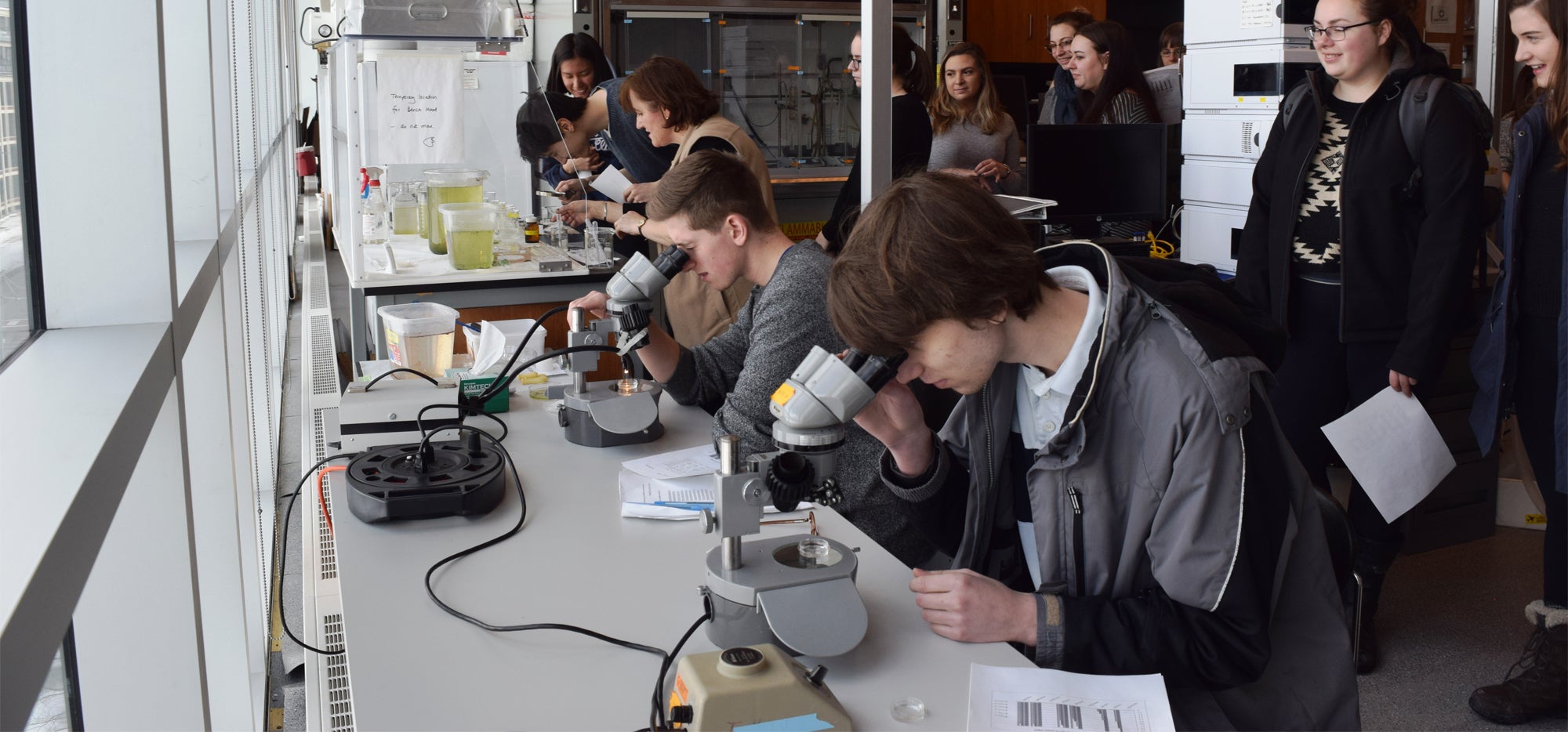
Hoeppe, trained both as a physicist and an anthropologist, saw the trip as an opportunity to help his students visualize the ideas, spaces, and processes they have been reading about this term.
“Seeing the structure of the physical spaces and hearing from the people conducting the research – this helps anthropology students understand the processes and challenges of producing high-quality results,” he says.
Durocher demonstrated an in vitro experiment – one performed on cells in a dish, in this case colon cancer cells that have been extracted from a human body. She explored the claim that parsley contains a powerful anti-cancer compound by conducting a bioassay, an experiment that measures the potency or concentration of a substance by the effect it has on living cells or tissues.
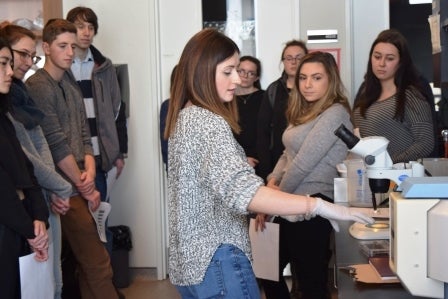
Durocher’s experiment showed the anthropology students that neither an extract of parsley leaves nor concentrated apigenin directly kill cancer cells.
Tudorancea conducted a bioassay on a species of water fleas. In vivo bioassays – ones that involve living organisms – are used to study the effects on environmental changes on simple organisms. In this case, she investigated the effect of salt on these living organisms.
She used water fleas for her experiment, hatching the fleas in the pharmacy lab. Two days before the anthropology visit, Tudorancea started the bioassay experiment, preparing beakers filled with different concentrations of salt solutions and water as the control. She placed fleas in the beakers, monitoring the effect that salt exposure had on over time. The bioassay proved that even small amounts of salt have lethal effects. This has implications for the integrity and diversity of aquatic ecosystems, especially as these environments are regularly contaminated by salt.
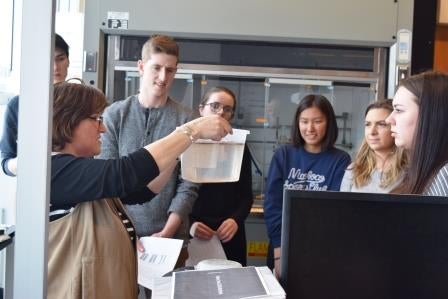
Tudorancea reached out to various groups to assist in gathering the resources for this experiment. The anthropology students viewed the fleas under microscopes and saw the impact that different concentrations of salt had on the flea populations and also how the food quality enhanced the survival.
“Today my students were able to witness the skill and the rigour required to develop and deliver sound experiments,” Hoeppe says. “This greatly benefits our understanding of how scientific practices are unavoidably social. It also helps us making sense of how bioprospecting for pharmaceutically useful plant ingredients works, which is one of the topics of our class.”
